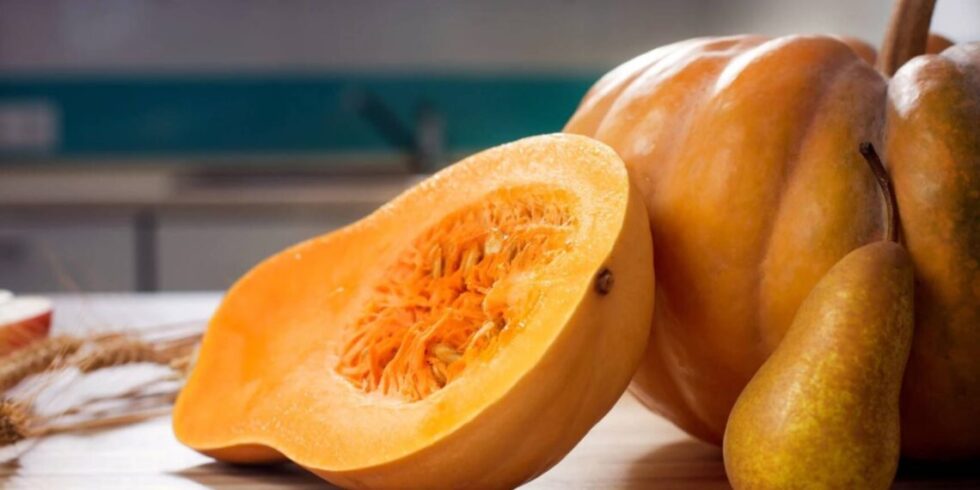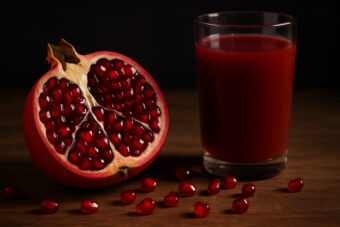Pumpkin is more than just a bright autumn vegetable – it is a food with a rich history, global presence and proven health benefits. Its low calorie value, wide nutritional profile and culinary flexibility make it a staple in many cuisines. From soups and porridges to pies and smoothies, pumpkin has a place on both everyday and festive tables. It is celebrated for its high content of beta-carotene, vitamins and fibre. Yet, like every food, it requires awareness of combinations and potential contraindications. At the same time, pumpkins differ in type, colour and flavour, and choosing the right one matters. To understand its value, it is useful to look at origins, varieties and seasonal recommendations, reported by G.business.
The origin of pumpkin and how it spread
Pumpkin belongs to the Cucurbitaceae family, alongside cucumbers, courgettes and melons. Archaeological evidence shows that pumpkins were first cultivated around 7,000 years ago in Central and South America, particularly in Mexico. Indigenous peoples valued pumpkin not only for its flesh but also for its seeds, which provided fat and protein. With the voyages of Christopher Columbus in the late 15th century, pumpkin seeds reached Europe. Over centuries, the plant adapted to different climates, becoming popular across Asia, Africa and Eastern Europe. Today, pumpkins are grown in over 100 countries and form part of local traditions, from American Halloween lanterns to Eastern European soups. This historical journey explains why pumpkin is now both a cultural and dietary symbol worldwide.
Examples of cultural uses of pumpkin:
- USA: carved pumpkins (Jack-o’-lanterns) at Halloween.
- Poland and Germany: creamy pumpkin soups in autumn.
- India: spiced pumpkin curries.
- Japan: kabocha pumpkin in tempura and stews.
Varieties of pumpkin and their characteristics
Pumpkins come in many shapes, colours and textures, each with distinct culinary purposes. Common field pumpkins are large and often used for carving rather than eating. Hokkaido (red kuri) pumpkins are smaller, sweet and ideal for roasting or soups. Butternut squash, technically a pumpkin relative, has nutty flavour and smooth flesh, perfect for purées and baby food. Spaghetti squash forms strands when baked and can replace pasta in low-carb dishes. Kabocha pumpkin, popular in Japan, is sweet and dense, often used in stews and desserts. Decorative gourds, although attractive, are generally not edible. Knowing the difference allows consumers to pick the right pumpkin for health or culinary goals.
Table – types of pumpkin and uses
| Variety | Flavour/Texture | Best Uses |
|---|---|---|
| Hokkaido | Sweet, firm flesh | Soups, roasting, baking |
| Butternut | Nutty, smooth | Purées, baby food, risottos |
| Spaghetti | Mild, stringy | Pasta replacement, gratins |
| Kabocha | Sweet, dense | Stews, desserts, tempura |
| Field pumpkin | Watery, fibrous | Carving, occasional soups |
How to choose a good pumpkin
Selecting the right pumpkin ensures both taste and nutritional quality. Look for a firm skin with no soft spots or cracks, as this indicates freshness. A ripe pumpkin should feel heavy for its size, suggesting high water content and dense flesh. The colour is also important: deep orange varieties are richer in beta-carotene. The stem should be dry and firmly attached – green or soft stems signal premature harvest. Small to medium-sized pumpkins are generally sweeter and easier to handle in the kitchen compared to very large ones. Always avoid pumpkins with mould or dents, as these may spoil quickly. Choosing wisely helps you enjoy the full benefits of this versatile vegetable.
Checklist when buying pumpkin:
- Firm, unbroken skin.
- Heavy weight relative to size.
- Deep, uniform colour.
- Dry, hard stem.
- No visible mould or soft patches.
Pumpkin season and best time to eat it
Pumpkin is a seasonal vegetable, and its nutritional value depends heavily on harvest time. In Europe, pumpkins are typically harvested from late August until November, with October being peak season. Freshly harvested pumpkins contain the highest levels of beta-carotene and vitamin C. When stored properly in cool, dry conditions, some varieties (such as butternut or kabocha) last for several months. Eating pumpkin in its natural season not only ensures maximum taste but also supports sustainable local farming. In contrast, imported or off-season pumpkins may lose some of their nutrients during long transport. Therefore, autumn remains the healthiest and most eco-friendly time to put pumpkin on the table.
Examples of seasonal pumpkin dishes:
- September: light pumpkin salads with seeds.
- October: classic pumpkin soup and purées.
- November: roasted pumpkin with cinnamon and dried fruits.
For what purposes to choose different pumpkins
Different pumpkin types match specific culinary or dietary needs. Hokkaido is ideal for soups thanks to its soft, edible skin and sweet flavour. Butternut squash, with its smooth texture, is perfect for purées, risottos and healthy spreads. Spaghetti squash is recommended for people on low-carb or gluten-free diets, as it mimics pasta strands. Kabocha works well in desserts, pies or as a potato substitute due to its dense sweetness. Large field pumpkins are more decorative but can still be used for juice or chunky stews. Seeds from almost all edible pumpkins are a rich source of zinc, magnesium and plant protein. Choosing according to purpose maximises both culinary enjoyment and health benefits.
Stay connected for news that works — timely, factual, and free from opinion — and insights that matter now: Why 18.5 Million Germans Choose Dental Supplementary Insurance for Better Care

